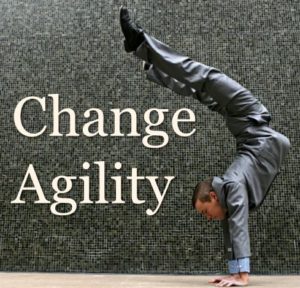In today’s dynamic business landscape, change is not just inevitable; it’s constant. Organizations continuously need to adapt and evolve, whether technological advancements, market shifts, or global crises drive it. In this context, embracing change with agility has become a vital competency for organizational success.
Understanding Organizational Change Agility: Change agility refers to an organization’s capacity to anticipate, respond to, and capitalize on change proactively and nimbly. It encompasses a mindset, skill set, and cultural orientation that enables individuals and teams to navigate uncertainty and complexity effectively.
Change-agile organizations are adept at sensing environmental shifts and adjusting their strategies, processes, and structures accordingly. They embrace a growth mindset that fosters experimentation and learning from successes and failures. This adaptability allows them to stay ahead of the curve and capitalize on emerging opportunities.
Key Principles of Organizational Change Agility:
1. Adaptive Leadership: Change-agile leaders lead by example, demonstrate humility, and empower their teams to take ownership of change initiatives. They create a supportive environment where innovation thrives, and employees feel motivated to embrace change as an opportunity for growth, even in the face of failure. This optimistic outlook fosters resilience and a willingness to learn from setbacks. Leadership is central to driving organizational change agility. Adaptive leaders are visionary, empathetic, and capable of inspiring and empowering their teams to embrace change. They foster a continuous learning and experimentation culture, where failure is seen as an opportunity for growth rather than a setback.
2. Flexibility and Resilience: Change often brings turbulence and uncertainty. Organizations with high change agility cultivate resilience at both individual and collective levels. By fostering a culture of resilience, these organizations can weather storms and emerge more resilient than before. Organizations must cultivate a culture of flexibility and resilience, enabling them to quickly adjust their strategies, processes, and structures in response to changing circumstances. This requires a willingness to challenge conventional wisdom, sparking excitement and inspiration about the potential for innovation and new ways of working.
3. Innovation and Experimentation: Change agility encourages creative thinking and risk-taking. This culture of innovation enables them to stay competitive in rapidly evolving markets and drive sustainable growth. Innovation is the lifeblood of organizational change agility. Companies must foster a culture of innovation, where creativity is encouraged and new ideas are actively sought out and tested. This may involve creating dedicated innovation labs, cross-functional teams, or partnerships with external stakeholders.
4. Empowering Employees and Stakeholders: Change is rarely a solo endeavor. It requires collaboration and collective effort across different functions, teams, and stakeholders. Change-agile organizations prioritize collaboration by breaking down silos, fostering cross-functional teams, and promoting open communication channels. They can tackle complex challenges more effectively by harnessing the collective intelligence and diversity of perspectives. Empowered employees are more likely to embrace change and contribute to organizational agility. Organizations should invest in employee development, provide opportunities for autonomy and decision-making, and create a supportive environment where employees feel valued and heard.
5. Customer-Centricity: Companies must focus on their customers’ needs and preferences in an increasingly volatile and uncertain world. This requires a deep understanding of customer behavior, preferences, and pain points and the ability to iterate and innovate rapidly to meet evolving needs. Change agility is not a one-time achievement but an ongoing journey. It involves a commitment to continuous learning, adaptation, and improvement. Agile organizations regularly assess their performance, solicit customer feedback, and iterate on their processes and practices. This relentless pursuit of excellence enables them to stay relevant and resilient in a rapidly evolving world.
In conclusion, change agility is a desirable trait and a strategic imperative for organizational companies in today’s dynamic business environment. Organizations can thrive amidst uncertainty and emerge stronger from their challenges by cultivating adaptability, resilience, innovation, collaboration, continuous improvement, and effective leadership. In essence, change agility isn’t just about surviving change; it’s about thriving in it.
References:
Change Agility: What It Is and Why It Matters to the Future of Work
https://www.coursera.org/enterprise/articles/change-agility
Returning Workers And Improving Employee Well-Being Post-Pandemic
13 Ways To Help Your Team Bounce Back After The Pandemic
Fostering Change Agility And Readiness In Your Organization
